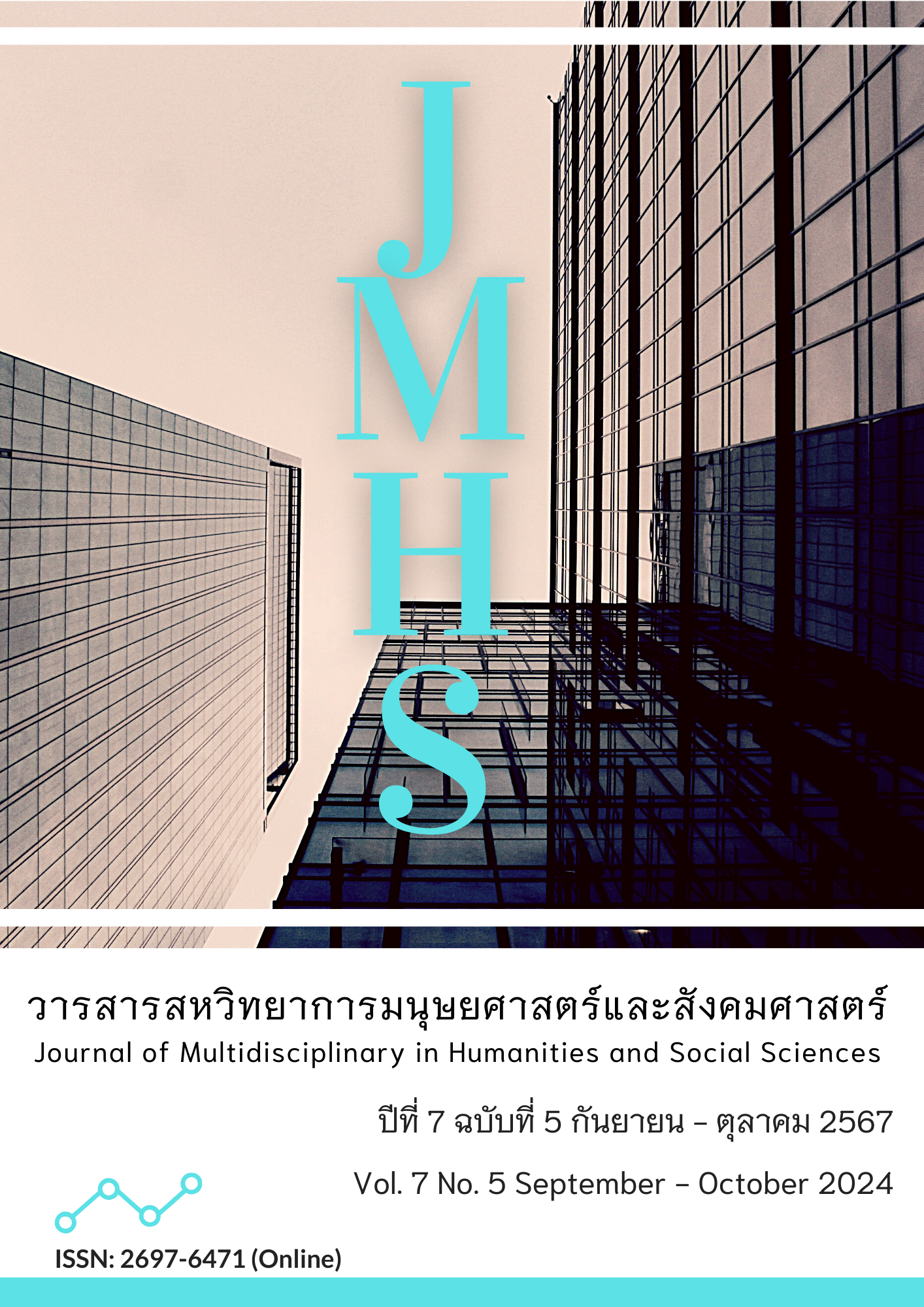ความเป็นแกนกลางของอาเซียนในเขตการค้าเสรีระดับภูมิภาค: กรณีศึกษาความตกลงหุ้นส่วนทางเศรษฐกิจระดับภูมิภาค
Main Article Content
บทคัดย่อ
บทความนี้มีวัตถุประสงค์เพื่อศึกษาถึงความเป็นแกนกลางของอาเซียน ภายใต้กรอบความตกลงหุ้นส่วนทางเศรษฐกิจระดับภูมิภาค และผลกระทบของความตกลงหุ้นส่วนทางเศรษฐกิจระดับภูมิภาคที่ช่วยส่งเสริมความเป็นแกนกลางของอาเซียนเมื่อมีการบังคับใช้ รูปแบบการวิจัยเป็นการวิจัยเชิงคุณภาพใช้แนวคิดภูมิภาคนิยม ผ่านทฤษฎีสัจนิยม ตั้งแต่ช่วงปี พ.ศ 2544 ภายหลังความล่าช้าของการเจรจาการค้าระดับพหุภาคีรอบโดฮาขององค์กรการค้าโลก จนกระทั่งพัฒนาไปสู่ความตกลงหุ้นส่วนทางเศรษฐกิจระดับภูมิภาค รวมถึงการให้สัตยาบันของประเทศสมาชิกครบถ้วน และมีการบังคับใช้
ผลการวิจัยพบว่าความเป็นแกนกลางของอาเซียน ไม่ได้ช่วยส่งผลให้ความตกลงหุ้นส่วนทางเศรษฐกิจระดับภูมิภาคสำเร็จ รวมถึงความตกลงหุ้นส่วนทางเศรษฐกิจระดับภูมิภาค ไม่ได้สนับสนุนความเป็นแกนกลางของอาเซียนและมีผลประโยชน์ต่อประเทศนอกภูมิภาคมากกว่าอาเซียน เนื่องจากอาเซียนไม่สามารถแก้ไขความขัดแย้งของการเจรจาความตกลงหุ้นส่วนทางเศรษฐกิจระดับภูมิภาค ที่มีความขัดแย้งของประเทศสมาชิก ทั้งด้านการค้าสินค้า การค้าบริการ การลงทุน และด้านอื่นๆ และส่งผลให้การเจรจาความตกลงหุ้นส่วนทางเศรษฐกิจระดับภูมิภาคยืดเยื้อเป็นระยะเวลา 8 ปี อีกทั้งไม่ได้เป็นความตกลงการค้าที่มีระดับความลึกของหัวข้อการเจรจามากไปกว่าข้อตกลงการค้าที่อาเซียนเคยมีมาอย่างเขตการค้าเสรีอาเซียนและอาเซียน+1 นอกจากนี้ ความตกลงหุ้นส่วนทางเศรษฐกิจระดับภูมิภาค ก็ไม่ได้สนับสนุนความเป็นแกนกลางของอาเซียน เนื่องจากให้ผลประโยชน์กับภูมิภาคเอเชียตะวันออกอย่างจีน ญี่ปุ่น เกาหลีใต้มากกว่าประเทศสมาชิกอาเซียน
Article Details

อนุญาตภายใต้เงื่อนไข Creative Commons Attribution-NonCommercial-NoDerivatives 4.0 International License.
ทัศนะและความคิดเห็นที่ปรากฏในวารสาร ถือเป็นความรับผิดชอบของผู้เขียนบทความนั้น และไม่ถือเป็นทัศนะและความรับผิดชอบของกองบรรณาธิการ
เอกสารอ้างอิง
กรมเจรจาการค้าระหว่างประเทศ กระทรวงพาณิชย์. (2555). องค์การการค้าโลก (World Trade Organization: WTO). สืบค้นเมื่อ 14 กุมภาพันธ์ 2567, จาก https://www.mfa.go.th/th/content/5d5bcc2715e39c306000a368?cate=5d5bcb4e15e39c3060006872
กรมส่งเสริมการค้าระหว่างประเทศ. (2557). รายงานผลการดำเนินงาน ตามแผนปฏิบัติการกรมเจรจาการค้าระหว่างประเทศ ประจำปีงบประมาณ พ.ศ. 2557. สืบค้นเมื่อ 3 มีนาคม 2567, จาก https://www.dtn.go.th/th/content/category/detail/id/7/cid/640/iid/7872
กรมส่งเสริมการค้าระหว่างประเทศ. (2558). รายงานผลการดำเนินงาน ตามแผนปฏิบัติการกรมเจรจาการค้าระหว่างประเทศ ประจำปีงบประมาณ พ.ศ. 2558. สืบค้นเมื่อ 21 มีนาคม 2567, จาก https://www.dtn.go.th/th/content/category/detail/id/13/cid/581/iid/9376
กรมส่งเสริมการค้าระหว่างประเทศ. (2564). รายงานผลการดำเนินงาน ตามแผนปฏิบัติการกรมเจรจาการค้าระหว่างประเทศประจำปีงบประมาณ พ.ศ. 2564. สืบค้นเมื่อ 21 มีนาคม 2567, จาก https://www.dtn.go.th/th/file/get/file/1.202201205a989a5d00ba0820921931d9826b8741112554.pdf
กระทรวงการต่างประเทศ. (2561). ประชาคมการเมืองและความมั่นคงอาเซียน (ASEAN Political-Security Community: APSC). สืบค้นเมื่อ 21 มีนาคม 2567, จาก https://asean.mfa.go.th/th/content/86069-apsc-blueprint-2025-และการสร้างสังคมอาเซียนปลอดภัย?page=5dd6133c50b6bf33fd6541d2andmenu=5d68abb215e39c1b9c05d3c0
สถานทูตสหรัฐฯและสถานกงสุลในประเทศไทย. (2565). ยุทธศาสตร์อินโดแปซิฟิกของสหรัฐอเมริกา. สืบค้นเมื่อ 21 มีนาคม 2567, จาก https://th.usembassy.gov/th/us-indo-pacific-strategy-th/
หฤษฎ์ รอดประเสริฐ และ ธนิดา ลอเสรีวานิช. (2556). การรวมกลุ่มทางเศรษฐกิจที่แน่นแฟ้นขึ้นในภูมิภาค?. สืบค้นเมื่อ 6 เมษายน 2567, จาก https://www.ryt9.com/s/bot/1689735
Aggarwal, V., & Koo, M. G. (2013). Chapter 13 The evolution and implications of bilateral trade agreements in the Asia-Pacific. https://doi.org/10.4324/9781315020976
Ahmed, Y. N., Delin, H., Reeberg, B. G., & Shaker, V. (2020). Is the RCEP a cornerstone or just collaboration? regional general equilibrium model based on GAMS. Journal of Korea Trade, 24(1), 171-207.
ASEAN Secretariat. (2007). Speech by Secretary-General of ASEAN H. E. Ong Keng Yong at the Opening Ceremony of the Annual German Ambassadors’ Conference “ASEAN at the Heart of Dynamic Asia” Berlin. Retrieved April 13, 2024, from https://asean.org/speech-by-secretary -general-of-asean-h-e-ong-keng-yong-at-the-opening-ceremony-of-the-annual-german-ambassadors-conference-asean-at-the-heart-of-dynamic-asia-berlin-3-sep/
ASEAN Secretariat (2007). The ASEAN Charter, Article 1, No. 15. Retrieved April 17, 2024, from https://asean.org/wp-content/uploads/images/archive/publications/ASEAN-Charter.pdf
ASEAN Secretariat. (n.d.). ASEAN-China economic relation. Retrieved April 17, 2024, from https://asean.org/our-communities/economic-community/integration-with-global-economy/asean-china-economic-relation/
ASEAN. (2012). RCEP Guiding Principles. Retrieved June 5, 2023, from https://asean.org/wp-content/uploads/2012/05/RCEP-Guiding-Principles-public-copy.pdf
Cutler, W., & Wester, S. (2022). ASPI note: Biden's blueprint for economic engagement in the Indo-Pacific. Retrieved April 13, 2024, from https://ies.princeton.edu/pdf/E210.pdf
Deb, R. (2020). Is RCEP a Panacea for India?. The Indian Economic Journal, 68(4), 659-666. https://doi.org/10.1177/0019466221998626
Drysdale, P., & Armstrong, S. (2021). RCEP: a strategic opportunity for multilateralism. China Economic Journal, 14(2), 128-143. https://doi.org/10.1080/17538963.2021.1937092
Estevadeordal, A., Suominen, K., Sanguinetti, P., & Trejos, A. (2005). Rules of origin in preferential trading arrangements: Is all well with the spaghetti bowl in the americas?[with comments]. Economía, 5(2), 63-103.
Fukunaga, Y. (2015). ASEAN's leadership in the regional comprehensive economic partnership. Asia and the Pacific Policy Studies, 2(1), 103-115.
Fukunaga, Y., & Isono, I. (2013). Taking ASEAN+ 1 FTAs towards the RCEP: A mapping study. ERIA Discussion Paper Series, 2, 1-37.
Hamanaka, S. (2014). TPP versus RCEP: Control of membership and agenda setting. Journal of East Asian Economic Integration, 18(2), 163-186.
Horn, H., Mavroidis, P. C., & Sapir, A. (2010). Beyond the WTO? An anatomy of EU and US preferential trade agreements. The World Economy, 33(11), 1565-1588.
Javorcik, B. S., & Narciso, G. (2017). WTO accession and tariff evasion. Journal of Development Economics, 125, 59-71.
Kawai, M., & Wignaraja, G. (2008). EAFTA or CEPEA: Which way forward?. ASEAN Economic Bulletin, 25(2), 113-139. http://www.jstor.org/stable/41220044
Lewis, M. K. (2015). TPP and RCEP: Implications of Mega-FTAs for Global Governance. Social Science Japan: Newsletter of the Institute of Social Science, The University of Tokyo, 52, 11.
Mueller, L. M. (2019). ASEAN centrality under threat–the cases of RCEP and connectivity. Journal of contemporary East Asia studies, 8(2), 177-198.
Oba, M. (2016). TPP, RCEP, and FTAAP: multilayered regional economic integration and international relations. Asia-Pacific Review, 23(1), 100-114.
Palit, A., & Mukherjee, D. (2019). India’s Tariffs and Implications for Indo-US Trade Prospects. ISAS Insight (575).
Panda, R. (2019). A Step Too Far: Why India Opted Out of RCEP. Global Asia, 14(4), 82-88.
Pangestu, M., and Armstrong, S. (2018). Asian economic integration: The state of play. Asian Economic Integration in an Era of Global Uncertainty, 15.
Pitsuwan, S. (2009). Building an ASEAN economic community in the heart of East Asia. Keynote speech delivered at the East Asia Beyond the Global Economic Crisis international symposium, Tokyo.
Plummer, M. G. (2014). The emerging “post-Doha” agenda and the new regionalism. In New Global Economic Architecture (pp. 172-196). Edward Elgar.
Ravenhill, J. (2003). The New Bilateralism in the Asia Pacific. Third World Quarterly, 24(2), 299-317. http://www.jstor.org/stable/3993514
Schott, J. J. (2004). Reviving the Doha round. Institute for International Economics, Mimeo.
Scott, J. (2014). A matter of record: Documentary sources in social research. John Wiley & Sons.
Shimizu, K. (2021). The ASEAN economic community and the RCEP in the world economy. Journal of contemporary East Asia studies, 10(1), 1-23.
Sukegawa, S. (2021). ASEAN’s initiatives for free trade in East Asia under AEC. Journal of Contemporary East Asia Studies, 10(1), 42-64.
Terada, T. (2018). RCEP negotiations and the implications for the United States. The National Bureau of Asian Research, 20.
Ye, M. (2015). China and competing cooperation in Asia-Pacific: TPP, RCEP, and the New Silk Road. Asian Security, 11(3), 206-224.


